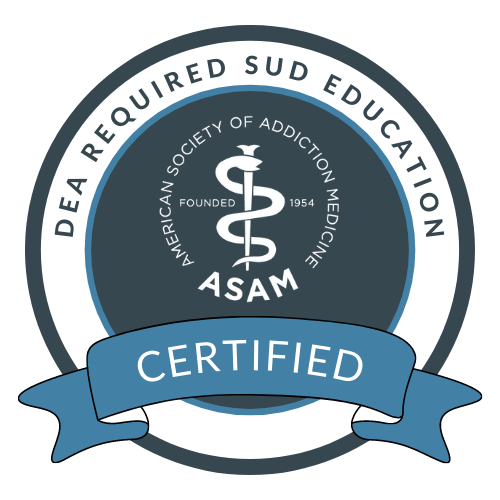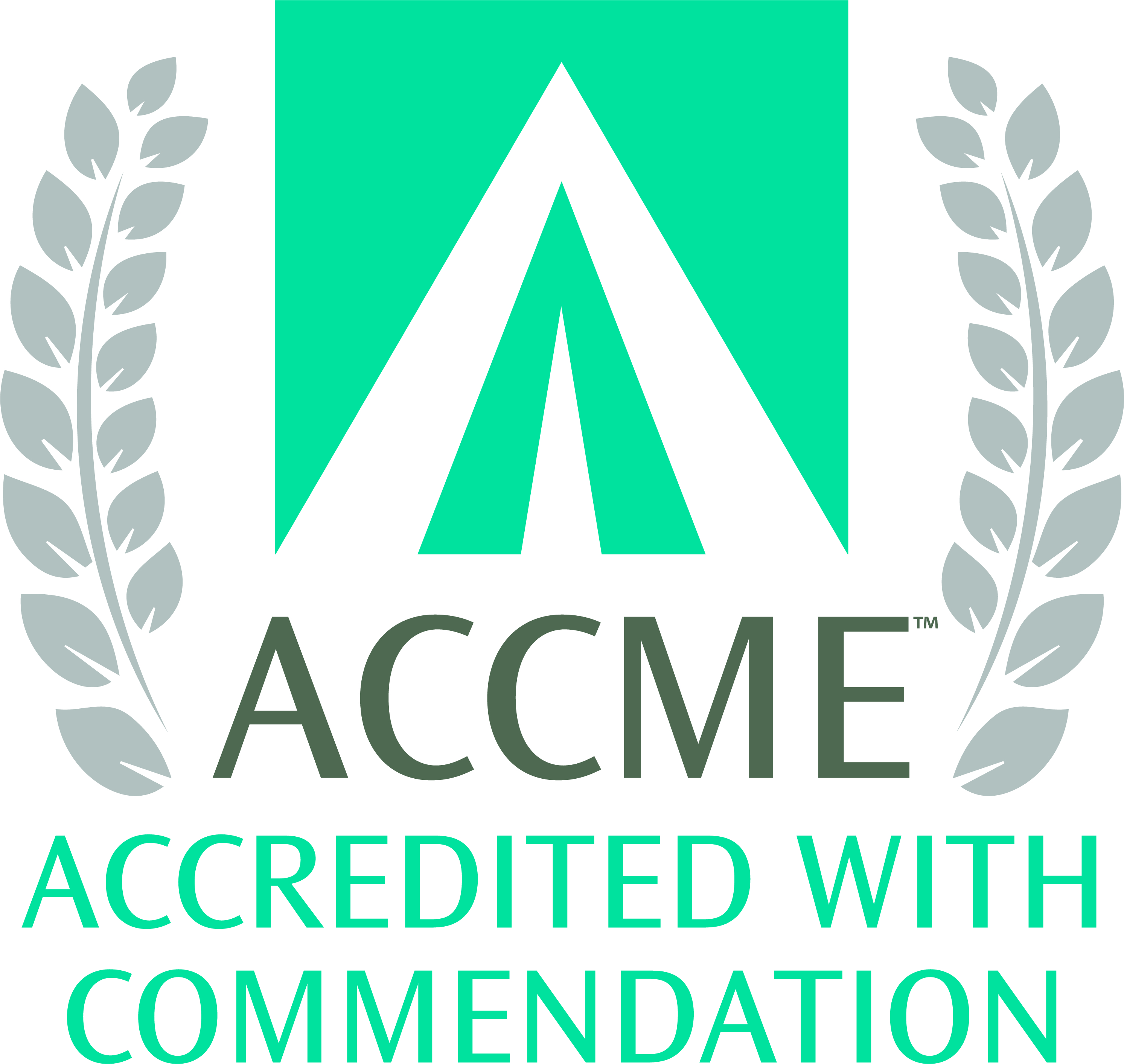
OUD Mini Course: Treatment in the Emergency Department
- Registration Closed

OUD Mini Course: Treatment in the Emergency Department
On-Demand Module
Overview
This 1-hour, on-demand, mini course is for prescribers in the emergency department (ED) seeking to initiate buprenorphine for the treatment of OUD. Through interactive and application-focused learning, this course provides essential education to empower prescribers in EDs to better identify, manage, and respond to patients with OUD.
This module offers interactive and application-focused learning. Participants will explore an overview of an opioid use disorder, evidence-based solutions for emergency medicine, and how to address patients with OUD in the emergency department.
Please Note: That recent legislation has removed the waiver requirement to prescribe buprenorphine. Some of the course content and descriptions refer to the waiver and we appreciate your patience as we work to update this content. To learn more about federal buprenorphine prescribing regulations, check out Policies Governing Buprenorphine for Opioid Use Disorder.
The target audience for this introductory level activity includes prescribers in the Emergency Department seeking to initiate buprenorphine for the treatment of opioid use disorder.
This activity addresses the following ACGME Competencies: Patient Care and Procedural Skills and Medical Knowledge.
Please Note: That recent legislation has removed the waiver requirement to prescribe buprenorphine. Some of the course content and descriptions refer to the waiver and we appreciate your patience as we work to update this content. To learn more about federal buprenorphine prescribing regulations, check out Policies Governing Buprenorphine for Opioid Use Disorder.
Learning Objectives
Upon completion, learners will be able to:
- Explain the opioid crisis in the United States and the effects it has on the Emergency Department
- Explain what occurs in the brain of a person with substance use disorder in terms of the brain's neurobiology
- Identify evidence-based medications for addiction treatment (MAT), including methadone, buprenorphine, and extended-release naltrexone
- Implement recommendations within the Emergency Department for screening, managing, and referring a patient for follow-up treatment programs
- Examine the Drug Addiction Treatment Act of 2000 (DATA 2000) and how qualified physicians can access MAT Waiver Training
DEA Education Requirement
As an accredited organization in Section 1263 of the Consolidated Appropriations Act of 2023, ASAM certifies that completion of this course meets 1 hour of the DEA requirement for 8 hours of education on substance use disorder(s).
Registration Rates
| ASAM Learner Type | Rate |
| ASAM Member | $0 |
| Non-Member | $39 |
| Associate Member | $0 |
| Resident Member* | $0 |
| Student Member* | $0 |
*Residents, Fellows-in-training, Interns, and Students must join ASAM to receive a discounted registration rate. Click here to become an ASAM member. National and Chapter membership dues apply. There is no charge for Students to become a Member, but verification of student status is required.
Membership Question? Call ASAM at 1.301.656.3920, email us, or view the ASAM website for more information.
Refunds & Cancellations
All ASAM e-Learning Center refund requests must be made in writing to Education@ASAM.org within 90 days of purchase. Those requesting refunds for courses that are in progress will receive partial refunds or e-Learning Center credit. Automatic full refunds will be made for any course with a live-course component that has been cancelled.
Registration Deadline: 07/15/2024
Course Instructions
- Click on the Content tab to begin this activity.
- Click Complete Post Test to answer multiple choice questions. Participants will have 10 attempts to pass and must answer 3 out of 4 questions correctly.
- Click Complete Evaluation to provide valuable activity feedback. Scroll down on all questions as there may be answer options that expand past the size of the window.
- Click the button Claim Medical Credits in the box titled Claim Credits & Certificate. Choose the type of credit and click submit. Click the button View/Print Certificate to save or print your certificate. You can view/print your certificate at any time by visiting the ASAM e-Learning Center, clicking Dashboard, and clicking Transcript/Achievements.
Need Assistance?
For assistance logging in, accessing activities, claiming credit, or for other questions or concerns, please check the FAQ page or e-mail Education@ASAM.org
ASAM is proud to offer eSSENTIAL Accessibility to ensure our website is accessible and functional for all our learners while providing free assistive technology for people with the widest possible range of abilities.

Shawn Ryan
MD, MBA, FASAM
Shawn Ryan, MD, MBA, FASAM originally trained as an emergency physician at the University of Cincinnati and simultaneously obtained his MBA while completing his residency. For over 10 years, Dr. Ryan has practiced in the Greater Cincinnati area, and for part of that period, he functioned as a hospital administrator. During this time, he became acutely aware of the issue of heroin/opioid abuse in the region and for the past 7 years has been working tirelessly to make a difference in his community. Dr. Ryan serves on many regional, state, and national committees/workgroups focused on turning the tide of this epidemic. He is the immediate-past president of the Ohio Society of Addiction Medicine and the current Chair of Payer Relations for ASAM. Dr. Ryan is very excited to continue to work in the field of addiction medicine and to have the opportunity to substantially impact the treatment needs of patients with substance use disorder.

David Rich
MPA
Dave Rich, MPA is the Director of Strategic Initiatives at BrightView Health. He has a Master’s Degree in Public Administration from the University of Akron. He has spent the last decade working in the public health space in various roles, including fundraising, program development and management, volunteer development, grant writing, and grantmaking. He is based out of Akron, Ohio.
CME, CE, CEU and Other Credit Types

ACCME Accreditation Statement
The American Society of Addiction Medicine is accredited by the Accreditation Council for Continuing Medical Education (ACCME) to provide continuing medical education for physicians.
AMA Credit Designation Statement
The American Society of Addiction Medicine designates this enduring material for a maximum of 1 AMA PRA Category 1 Credits™. Physicians should claim only the credit commensurate with the extent of their participation in the activity.
NAADAC, the Association for Addiction Professionals
This activity has been approved by the American Society of Addiction Medicine, as a NAADAC Approved Education Provider, for educational credits. NAADAC Provider #295, ASAM is responsible for all aspects of the programming.
California Association for Drug/Alcohol Educators (CAADE)
This educational program is approved by CAADE: #CP40 999 1222
California Association of DUI Treatment Centers (CADTP)
This educational program is approved by CADTP: #205
California Consortium of Addiction Programs and Professionals (CCAPP)
This educational program is approved by CCAPP: #OS-20-330-1222
Continuing Education Credits (CEUs)
Non-physician participants will receive a certificate of attendance upon completion of the activity and an online evaluation confirming their participation. Participants should submit his/her certificate of attendance to their professional organization/institute.
Maintenance of Certification (MOC) or Continuing Certification Programs (CCP)
American Board of Preventive Medicine (ABPM)
The American Board of Preventive Medicine (ABPM) has approved this activity for a maximum of 1 LLSA credit towards ABPM MOC Part II requirements.
American Board of Anesthesiology (ABA)
This activity contributes to the CME component of the American Board of Anesthesiology’s redesigned Maintenance of Certification in Anesthesiology TM (MOCA®) program, known as MOCA 2.0®.
American Board of Pediatrics (ABP)
Successful completion of this CME activity, which includes participation in the activity, with individual assessments of the participant and feedback to the participant, enables the participant to earn a maximum of 1 MOC point in the American Board of Pediatrics’ (ABP) Maintenance of Certification (MOC) program. It is the CME activity provider’s responsibility to submit participant completion information to ACCME for the purpose of granting ABP MOC credit.
American Board of Internal Medicine (ABIM)
Successful completion of this CME activity, which includes participation in the evaluation component, enables the participant to earn up to 1 Medical Knowledge MOC point in the American Board of Internal Medicine’s (ABIM) Maintenance of Certification (MOC) program. Participants will earn MOC points equivalent to the amount of CME credits claimed for the activity. It is the CME activity provider’s responsibility to submit participant completion information to ACCME for the purpose of granting ABIM MOC credits.
American Board of Surgery (ABS)
Successful completion of this CME activity, which includes participation in the evaluation component, enables the learner to earn credit toward the CME and/or Self-Assessment requirements of the American Board of Surgery’s Continuous Certification program. It is the CME activity provider's responsibility to submit learner completion information to ACCME for the purpose of granting ABS credit.
American Board of Psychiatry and Neurology (ABPN)
Successful completion of this CME activity can be used to satisfy the American Board of Psychiatry and Neurology’s (ABPN) CME requirement for Maintenance of Certification program.
Royal College of Physicians and Surgeons of Canada (RCPSC)
Royal College Fellows can use participation in Accredited Continuing Medical Education to earn Section 3 Credits
American Board of Addiction Medicine (ABAM)
Successful completion of this activity can be used to satisfy the American Board of Addiction Medicine (ABAM) for Tmoc as credits towards ABAM LLSA Part II requirements.
Disclosure Information
In accordance with disclosure policies of ASAM and the ACCME, the effort is made to ensure balance, independence, objectivity, and scientific rigor in all CME activities. These policies include mitigating all possible relevant financial relationships with ineligible companies for the Planning Committees, CME Committee, MEC, and Faculty. All activity Planning Committee members and Faculty have disclosed relevant financial relationship information. The ASAM CME Committee has reviewed these disclosures and determined that the relationships are not inappropriate in the context of their respective presentations and are not inconsistent with the educational goals and integrity of the activity.

